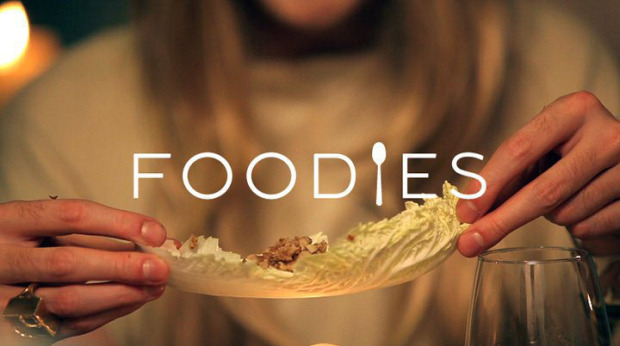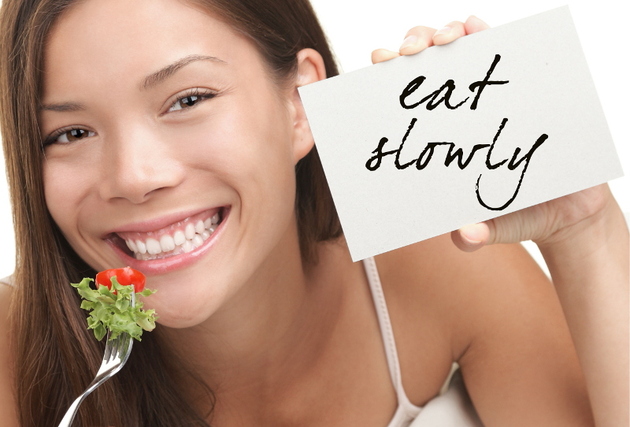Tagged: recipes
Foodie vs. Age
The world is currently populated with a large percentage of food loving adults, called “foodies.” People who love to eat, cook and/or explore the myriads of foods and recipes that can be found all over the world. As woman in her 50’s raised by a woman who was a foodie before the term was coined, I love and appreciate unique restaurants or dishes and of course pairing fine wine with my meals as well. But as a women in her 50’s I am also experiencing a dichotomy to my love of food that lately has me quite annoyed.

First is the fact that I am a fitness professional (Certified Personal Trainer and Nutrition Expert) and because of that I simply cannot just hang out and eat everything I want to whenever I want to. Even though I am not so strict with my nutrition that I can’t indulge in comfort foods or high-caloric meals on occasion (after all moderation is my mantra), I still feel wrong indulging in exquisitely prepared seven course meals or conversely enjoying cheese nachos at the movies. I worry that I’m sabotaging my fitness goals.

Second, and worse for a foodie – I find that my digestive tolerance has changed and lately I can’t handle rich foods or too much wine like I used to. Everything from acid reflux, to sour stomach, or cramps and bloating seems to follow whether we’ve had a fancy night out or a dinner party with friends.

The irony is that while around the age of 50, most of us can finally afford to explore foods and restaurants more than we could in our 20’s, and that our pallets are finally the most developed, we also find that our bodies can’t always process certain foods or quantities like they used to.

So what can a foodie do when the body rebels? The answer for me has been to slow down. We spend so much time rushing around, it translates to eating as well. Take time when eating. Chew slowly, let the enzymes in your mouth do their job. Pay attention to all the nuances of the foods or wines you’re consuming – be in the moment by taking your time and really experiencing the meal. Sip the wine, talk with those around you, and let your body relax while you enjoy the meal.

When not indulging in explorations of new restaurants or recipes (i.e., eating every day foods), always remember to keep your nutrition balanced with lots of fiber and water, keep your quantities small, chew or swallow enzymes on a daily basis and most importantly, savor your food. Food is nourishment and life, but it is also art and a joy when handled properly – at any age!

Kids Can Cook
At age nine, my daughter showed an interesting in learning to cook. I taught her a few simple and safe recipes to see if that was enough to satisfy what might have been a fad. But now that she is 10 she’s expressing a more serious interesting in learning to cook more than eggs, and to handle a knife. Together we watched the Food Network’s Chopped Junior and discovered that there are many children in the U.S. that are very well versed in cook, and in some cases have more advanced skills kitchen than many adults I know.

My daughter and I sat down recently and analyzed the amount of fat, sugar, carbs, protein, and sodium in her average daily intake vs. some of her school mates’ daily diets. She saw first hand that many of her friends were ingesting far more sugars, fats, and salts in one day then she might in a week. Of course, we acknowledge that our household is not the norm. When you live with a trainer – especially one who has good cooking skills – you’re going to eat healthier than most families. But it still left an impression upon her that she wanted to focus her cooking on healthy recipes, or to follow in my tracks of taking high-caloric foods and using substitutes to make them healthier (like my black bean brownies).

After setting down firm ground rules (like no using knives or the stove/oven without adult supervision), I have begun involving her directly as I prepare our meals. We don aprons together, prepare our mise en place (French for “putting into place,” i.e., preparing all your utensils, foods, spices, etc.) and get down to cooking. She loves telling her Dad or our guests that she was the Sous Chef (2nd to the head chef) as she proudly helps me plate and serve the meal.

Cooking with your kids has little down-side. They gain self-confidence, learn beneficial health knowledge, make memories that they will cherish centered around spending time with you, and – added bonus – if you’re like me, you teach them to clean as you go, which lightens your burden of KP (kitchen pick up). I’ve also discovered that along with a feeling of empowerment and pride that children feel when they can create something tasty in the kitchen, comes the added benefit of a better understanding of nutrition and how it affects the body.

So whether you’re comfortable in the kitchen or not, I suggest you buy a kid-friendly cookbook (amazon has several written by kid-chefs), enroll your child in a youth cooking-class, or best yet – experiment with cooking healthy recipes together.

Does Thanksgiving Give You Anxiety? (Reprint)
In November of 2013 I published this article to help reduce some of my client’s anxiety over the impending Thanksgiving feast. I thought it best to repeat it this week as Thanksgiving 2014 is just days away. I have made a few more notes of nutritional advice as well. Hope it helps a new group of food-worriers.
* * * * * * *
Here it comes, the single most high-caloric, high sodium, high sugar meal of the year — Thanksgiving!
It’s no wonder so many of my clients suffer anxiety over the this annual feast of thanks. They worry about what to cook, how to cook, when to cook, what to eat, what NOT to eat, and the biggie … how much weight they’ll gain. Okay, people, listen very closely to what I’m about to say….
DON’T WORRY ABOUT IT!
The reality is that unless you gorge yourself on crappy processed carbs, sugar and fats for 48 hours non-stop, you’re not going to do that much damage in one day/meal. Now I know some of you look at the Thanksgiving feast as just that … crappy processed carbs, sugar and fats, but in reality for most the meal just isn’t that bad, especially if approached with moderation, and an accepting state of mind. Stress puts more weight on than a meal, and accepting that this is just ONE higher calorie day out of many other days where you burn more than you consume, willl help you relax.
Again, the key is moderation. Substitute healthier food choices when possible. Eat smaller portions when your only choices (or your desire) is less quality and higher calories. Here’s a simple list of choices and/or substitutions that are quick and painless and can make the difference between a 1400 calorie meal and an 800 calorie meal.
TURKEY: Eat the white meat, it’s packed with protein, and very lean. If you love the dark meat, just mix a small quantity in with the white meat.
MASHED POTATOES: Substitute mashed sweet potatoes or yams. Use olive oil and non-fat milk instead of butter and cream. If your starch tradition also includes yams covered with marshmallows, consider nixing the marshmallows, but at the very least, keep the portion ridiculously small.
STUFFING: Hard to make substitutions here (gluten-free bread is one), but if you are a stuffing junkie – keep the quantity small. I personally make small “stuffin’-muffins,” which allows for better portion control. (Rachel Ray has an excellent recipe, google it!)
GRAVY: Another item that’s difficult to substitute in a way that’s healthy and tasty (and also must be altered for those looking to be gluten-free) , but if you keep it as a garnish and not a soup-sized portion, you’ll be alright.
VEGGIES: Skip the green bean-mushroom soup–Velveeta casserole, and just oven-roast your veggies with Extra Virgin Olive Oil, salt and pepper. You can then fill up with these powerful green veggies loaded with vitamins and fiber, helping you to eat smaller portions of the starchier side dishes.
BREAD: Bottom line is rolls are a redundant waste of nutrition-less filler that you can definitely skip. If you’re having stuffing there’s already enough of bread on your plate!
DESSERT: What can I tell you … desserts are where most people have the hugest weakness. I make organic apple pie casserole (with no refined sugar) topped with crumbles of gluten-free granola (therefore no crust), but if you have no healthy options, keep the portion size small and skip the ala mode (ice cream) in favor of a small dollup of home-made whipped cream (made with only a dash of maple syrup as the sweetener).
ALCOHOL: Being that I was grew up not far from Napa, California, wine is definitely a part of my thanksgiving feast. But I keep it to Red (which has less sugar content) and in general is healthier for you (if kept to moderation of course).
In conclusion, don’t sweat Thanksgiving. It’s a lovely holiday where friends and family gather to eat, drink, catch up and hopefully share a few laughs. Keep your nutrition in check but don’t micro manage it, and on Friday, work out instead of or before shopping (although walking the mall is good for burning a few calories as well).
Happy Thanksgiving to you all!
Healthy Nutrition Made Easy
Everyone should know this by now: nutrition is responsible for 70% of how your body looks (i.e., how lean you are). The biggest complaint I hear from my clients is that they have no time to eat right: they don’t know how to plan, shop, prep and create healthy tasty meals in a short amount of time and with a small grocery budget. The good news is I DO! Like anything else that works easily in life, a “system” is key. A healthy eating system is comprised of the following steps:
1. Plan
2. Shop
3. Prep
4. Cook & Store
PLAN
Pick one day a week where you will plan out your breakfasts, lunches, dinners and snacks. Whether you are solo or cooking for a family planning is the same, and your menu does not need to be elaborate. For example: breakfast burritos, turkey & veggie wraps, oven roasted chicken & veggies with Quinoa, fruit, nuts, beans, humus, peanut butter and yogurt for snacks.
SHOP
With your written shopping list in hand, hit the store. If you’ve got a Trader Joe’s nearby that’s your best bet for getting healthy quality for a very affordable price. Fortunately all the big grocery store chains now have organic options and carry formerly hard to find things like quinoa and whole wheat tortillas, etc. Here are some staples I recommend you always have on hand:
Canned Black beans and Garbanzo Beans (low sodium)
Quinoa
Peanut or Almond Butter
Oats
Almonds (unsalted)
Low Sodium Chicken Stock
Eggs, Egg Beaters, or Egg Whites
Canned Salmon (wild caught)
Olive Oil
Raw Organic Sugar or Organic Coconut Sugar
With these items you can always stir up a quick meal or snack.
PREP
There are two types of prepping: “non-cook” and “pre-cooking.” Snacks are “non-cook.” Place handfuls of almonds in snack bags. Same for sliced up apples or grapes. Fill a lunch or snack sized tupperware with veggies and humus; salad of mixed veggies with canned salmon and drizzled dressing. Many items can be made the night before such as turkey & veggies with mustard (no Mayo) in a whole wheat tortilla.
“Pre-Cooking” is usually exclusively for dinner preparation. In the morning I slice up a myriad of veggies and place in a ziplock bag. I do the same with boneless skinless chicken breasts, thighs, fish, organic chicken sausage (no nitrates) or tofu – whatever protein I’m choosing. Then when I get home it’s ready to cook (see below).
Pre-cooking also works for salads, or crockpot dishes. The idea is simply to slice everything up when you have the time (the night before or the morning of), and then quickly cook it (or let the crock pot cook it all day).
COOK & STORE
At night, I take my already-to-go items and place them all in a roasting pan, drizzle with extra virgin olive oil, sea salt, pepper and any other seasonings I’m in the mood for (curry, chipolte, herbs). Then I place the whole thing in the oven at 475○ for 45 minutes (stirring once halfway through). I might also cook a cup of quinoa in two cups of chicken stock. When the oven roasting is done, I mix in the cooked quinoa. Makes the meal go further and be heartier. (Quinoa can be pre-cooked as well and stored in the fridge.)
Or you can stir-fry the items with a low-sodium marinade if you don’t want to use your oven. Prepped items can be made for grilling as well. Veggies in a foil pouch go on the top rack, marinated chicken or fish on the bottom.
Usually while the dinner is cooking, I take 5 minutes and make the breakfast burritos for the next morning. Sauté spinach and black beans with eggs (or egg whites or egg beaters), then roll into a whole-wheat tortilla, cover in salsa or hot sauce (optional) and wrap in foil. The next day this can be microwaved (out of the foil of course). During the dinner cooking time, I also make lunches for the next day, unless I plan to make the left-overs be lunch (in which case I just get the tupperware out and ready).
Once dinner is over, I take the left-overs and store for the next night’s dinner or lunch (depending upon quantity left). If I made a huge amount (crockpot meals usually), I might freeze the rest for eating the following week.
* * * * *
Hopefully these tips will help healthy nutrition seem a little less difficult to you and you’ll embrace the freedom you’ll find from having planning, shopping, prepping and cooking become routine. Lots of easy and healthy recipes are floating in the internet for you to find (especially on Pinterest), so have fun experimenting.










